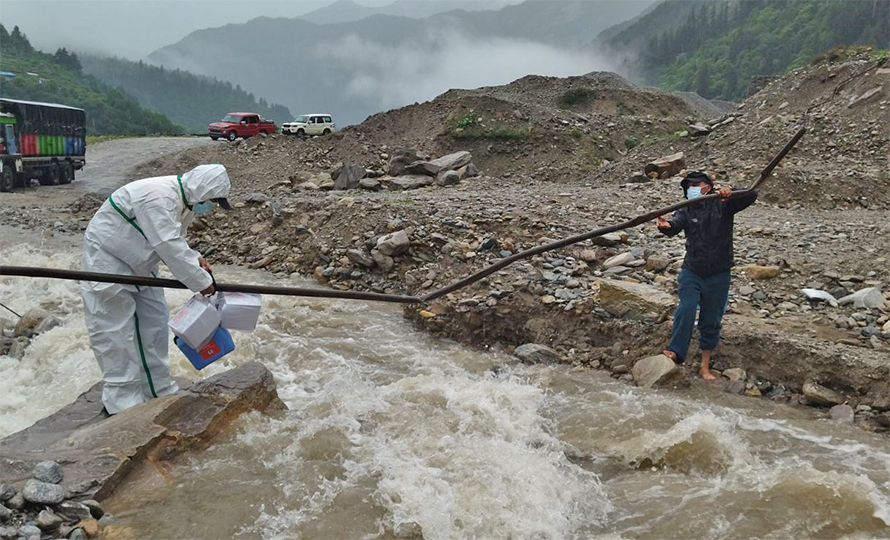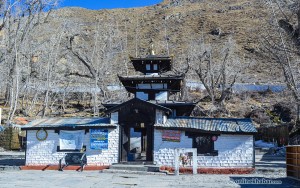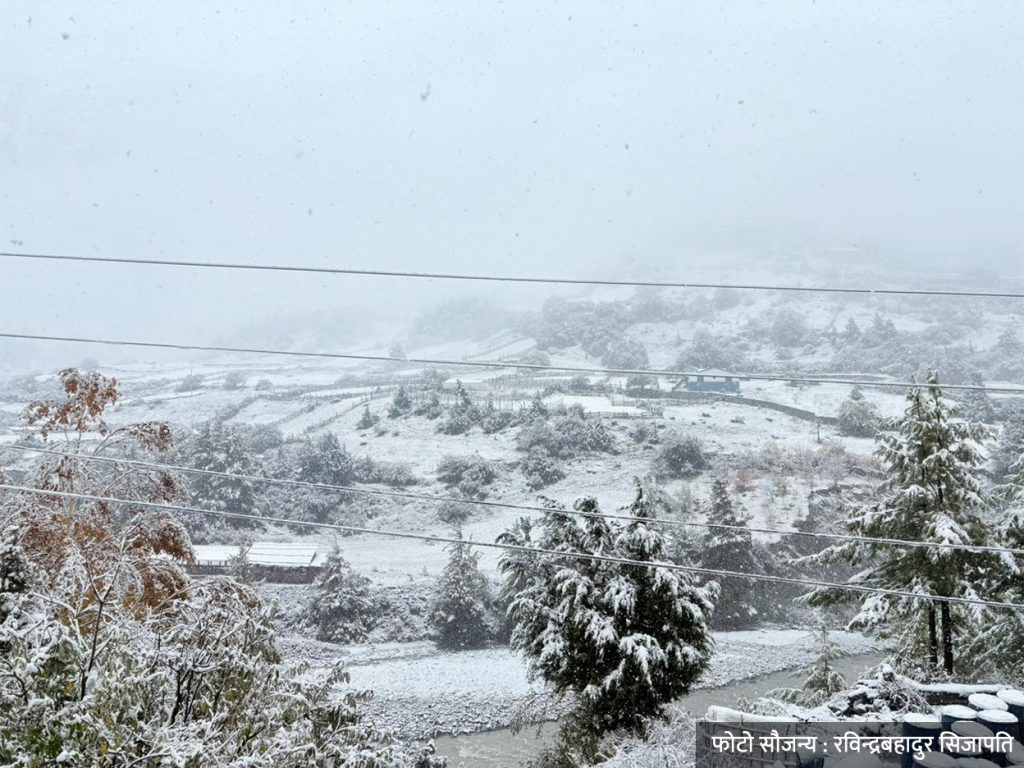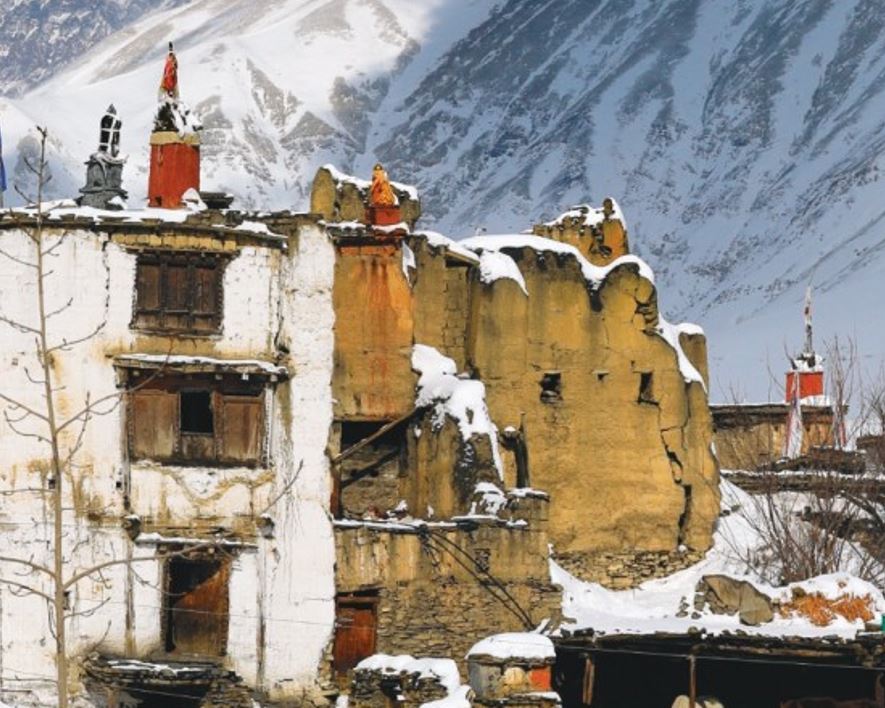On the morning of June 15, 2021, health workers of Tukuche and Kowang health posts were on their way to get the Covid-19 vaccines. But, the Chaktang river in Thasang rural municipality of Mustang got flooded, and they were left stranded.
The municipality had informed the locals above 55 years of age to get vaccinated. But, with the flood, it was not possible to cross the river. Hence, they hacked a way to deliver the vaccines using a long (iron) pipe. And, their feat is being praised by the international community as well.
Even Dr Tedros Adhanom Ghebreyesus, the World Health Organization (WHO) director-general, tweeted a video showing the Mustang health workers at work and praised them.
Behind the scene
The municipality had plans to administer second doses of Covishield to the locals, over the age of 55, on June 15. Those who had got their first dose of vaccine on March 7 and 8 were also informed to come for their second dose that day at 10 am.
The Mustang District Public Health Office had already delivered the vaccines to the Lete primary health centre in the Thasang village. Because all the health posts did not have a cold chain to store the vaccination, all doses were in Lete.
As scheduled, the plan was to take the vaccines from Lete on June 14 to vaccinate the senior citizens the next day.
But, heavy rain started on June 11th, and on 15, the Chaktang river flooded, hindering their travel.
Due to the floods, vaccination could not be delivered to the Tukuche Health Post of ward 1 and Kowang Health Post of ward 2 as scheduled. About 60 senior citizens were waiting for vaccination in both wards.
According to the chief medical officer of Lete Primary Health Centre Dr Laxman Thapa, the health workers of both the health posts were sent to collect the vaccination in the municipality’s vehicle.
But due to the flood, the driver Gagan BK who went to deliver the vaccines got stranded on one of the river whereas assistant health workers, Sabin Khatri and Lal Bahadur Rokaya who went to collect the vaccines were stuck on the other side.
The ravaging flood was dangerous and loud. Communication across the thundering river was hard. “I carried the vaccine from Lete Primary Health Centre, but I could not cross the Chaktang river. I did not dare to cross it either,” expressed BK.
The Solution
When it was established that they could not cross the river, they decided to pass the box of vaccines
BK explains further how he searched around the place where a bridge was being built over the river and found an old long iron pipe.
“I brought the pipe and checked if it reached the other end to deliver the vaccine container with the pipe. But, it was difficult to manoeuvre alone. A pedestrian was walking along the riverbank and got his help. And finally, we managed to pass the carriers with the pipe.”

Lal Bahadur Rokaya, a health assistant at Kowang Health Post, says, “Though we could not hear what we were saying due to the roaring river, we gave him the idea to use the pipe with gestures. I do not know if he heard or not, but he went near the bridge and came back carrying a long iron pipe. We searched the narrow part of the river and planned to get the containers by stepping on a big rock. And, we succeeded in that.”
According to Khatri, there were locals on their side waiting because they were unable to cross the river. They advised the health workers, “Since you have taken such a risk, we took photos/videos to remember.”
How did the video go viral?
After receiving the vaccine containers, they went back to their health post. Local senior citizens had already arrived at the health centre. After the vaccination, they retold the story to auxiliary nurse midwife Anjila Thakali of the health post.
She then suggested posting the photo and video on social media. “I did not want to put up on social media. We thought not everyone would feel it was appropriate to take such a risk to get important health supplies such as vaccines.
But, Thakali asked Sabin Khatri to share photos and videos to watch. He agreed and shared. “Then, all of a sudden that video went viral. The video had already reached the WHO through districts, states and the centre, without our notice,“ says Khatri.
Not made to go viral
The health workers, hence, say the video was not made to go viral.
“During the epidemic, who would think of being famous and going viral? The day of hard work became a memorable day at work the next day,” Khatri says, adding, “It felt good to get praise from the highest authorities. Even the head of the WHO tweeted the video I took and found out that Nepali health workers have been called ‘heroes’. That gave us motivation.”
Khatri, a permanent resident of Triyuga municipality-2 of Udayapur, had the opportunity to work in the municipality only a year and a half ago.
BK, the mastermind of the plan to transport vaccine carriers, also says he was happy to hear his work was praised. “We did not shoot the video to go viral. We used our intellect to get the senior citizens vaccinated as planned, the same day,” he says.



























